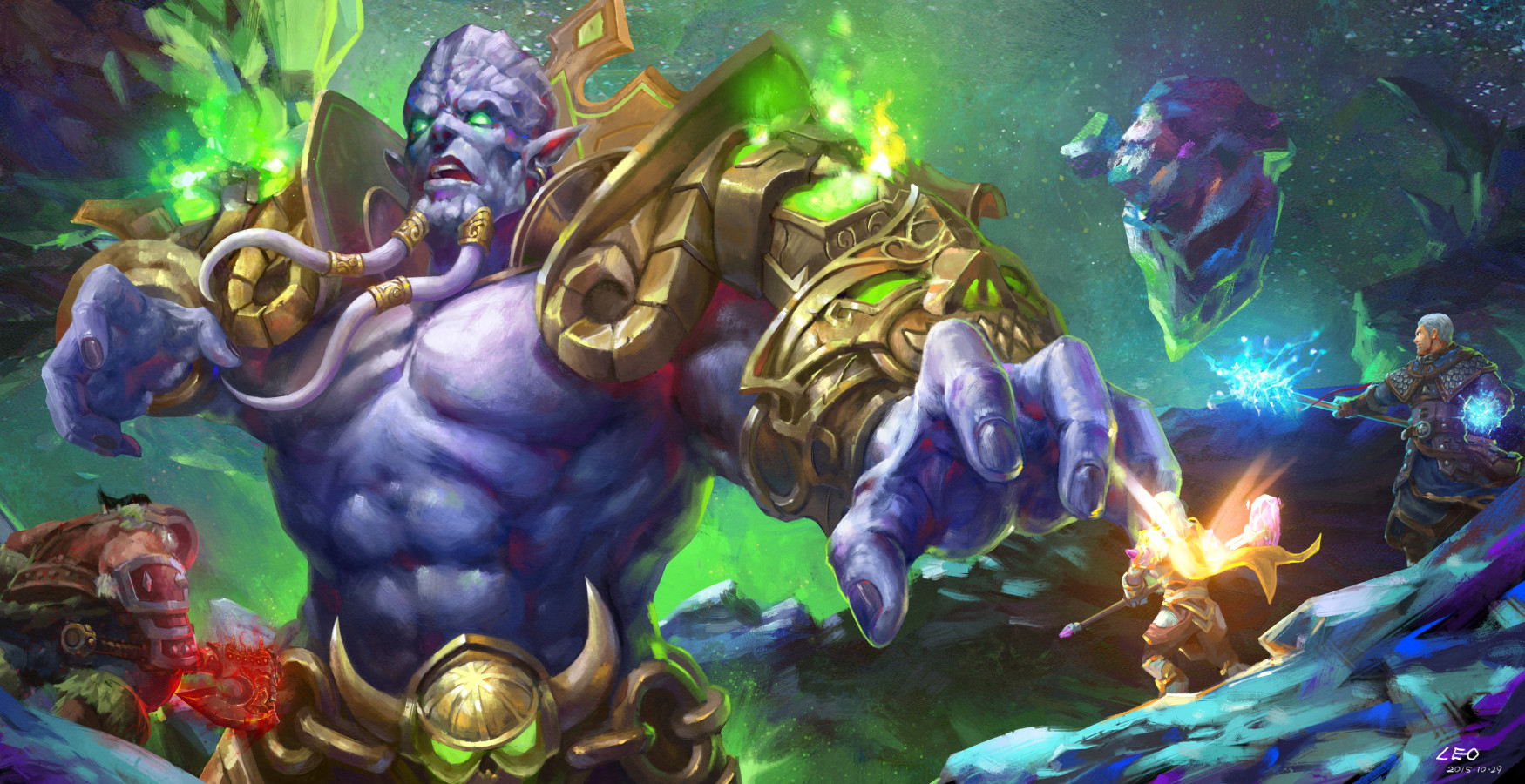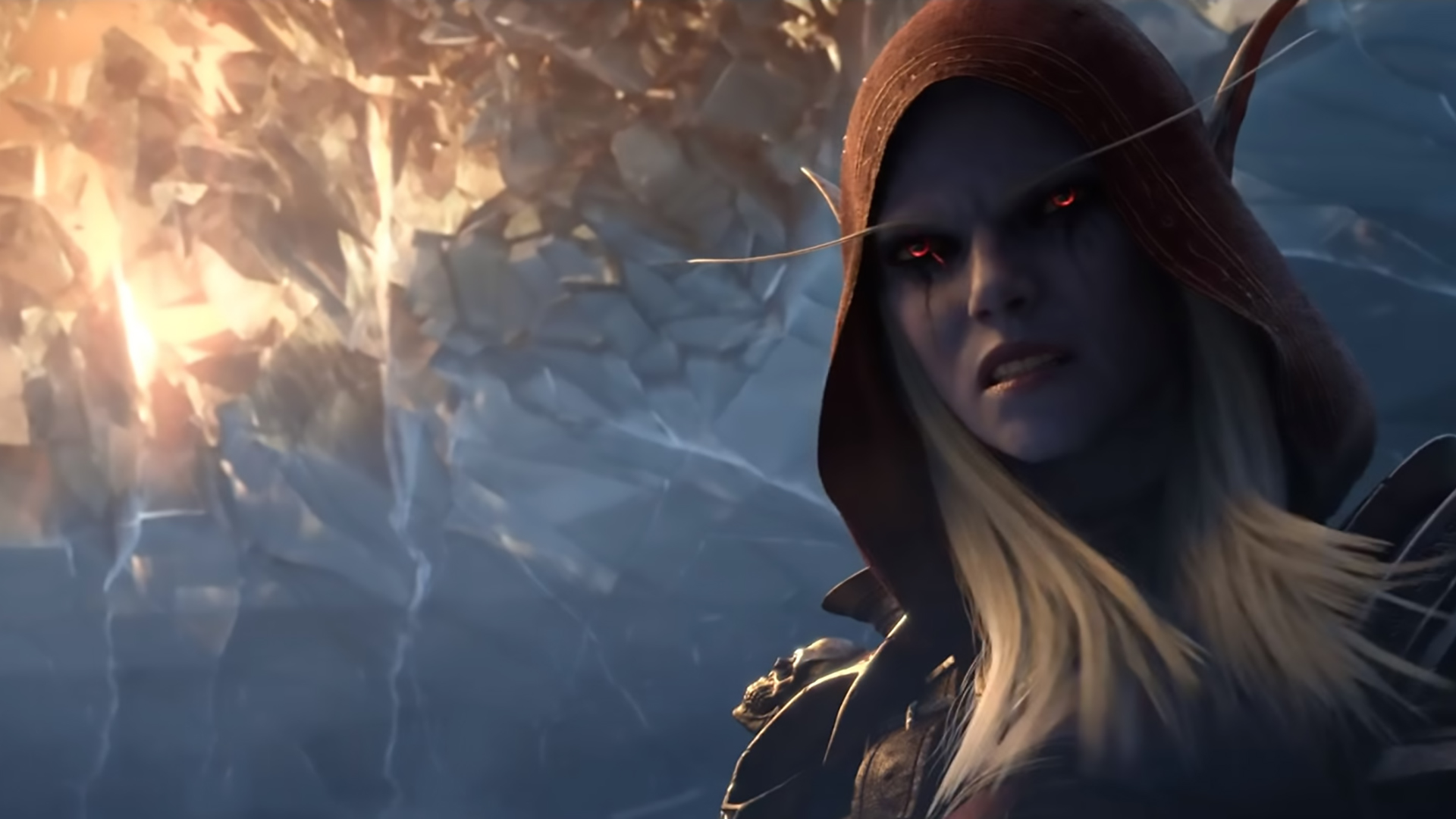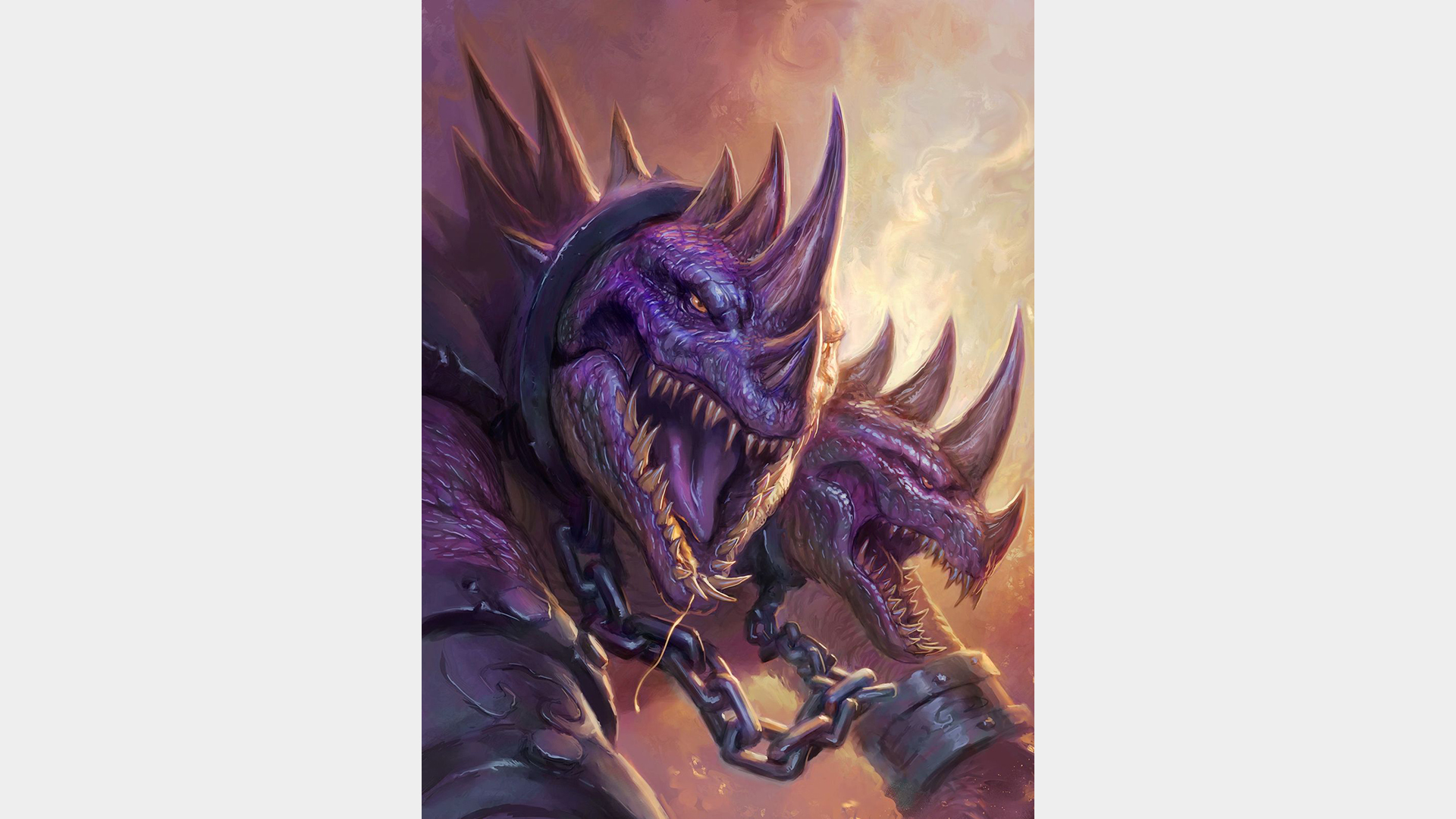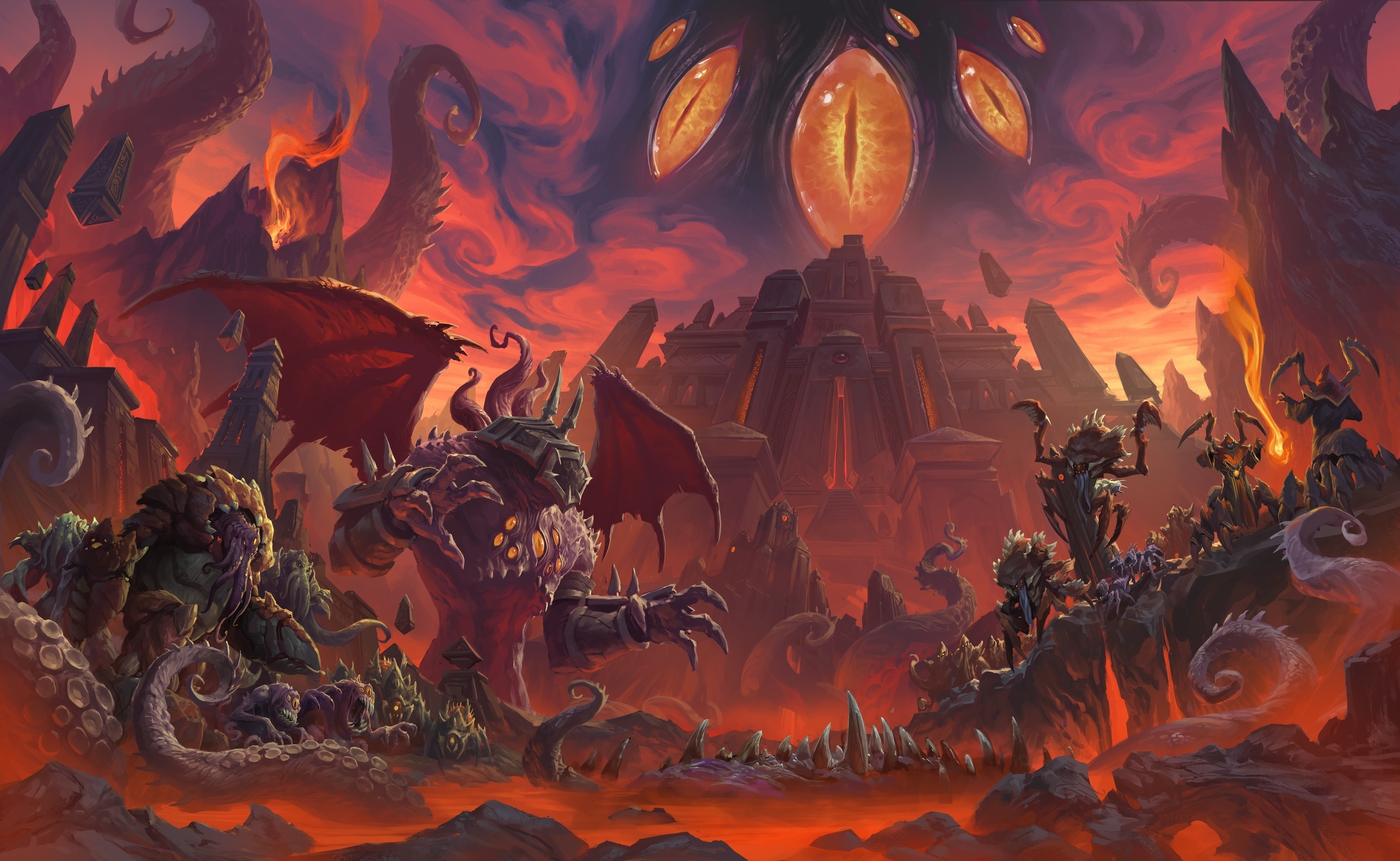The endless duel between WoW raids and the mods that break them
World of Warcraft's lead game designer talks about the complicated relationship between raids and addons.


Everything we know about World of Warcraft: Shadowlands, the ambitious new expansion for World of Warcraft.
For 16 grueling days in the summer of 2015, the demonic stronghold of Hellfire Citadel punished the most competitive guilds in all of World of Warcraft. It was a nail-biting race to be the first to clear its newest raid. The final boss, Archimonde, was a daunting challenge thanks, in part, to an ability called Wrought Chaos.
Each time Archimonde branded all 20 players with Wrought Chaos, seething green lasers tore through the raid, exploding from one player directly toward a randomly marked partner. With ten of these beams going off in rapid barrages, it was vital for each raider to line themselves so that their beams hit only their partner. Getting caught in the crossfire would be fatal.
I didn't even know that people could do that [at the time]. That’s so clever.
Morgan Day, lead game designer
Living up to the name, Wrought Chaos turned an already brutal boss fight into a tumultuous and deadly dance. Necessity being the mother of invention, raiders soon developed a means to mitigate some of the havoc: An addon that drew lines on a radar, helping players aim their beams and avoid extra casualties.
"I didn't even know that people could do that [at the time]," Morgan Day, WoW's lead game designer, tells me. "That’s so clever. It's just something that is core to WoW functionality, but they had learned how to apply it in a way that really might make their raid encounter or dungeon a little bit easier."
Day and the rest of World of Warcraft's developers found out that players were using some complicated math to bend the game's code to their will when top guilds began releasing kill videos, memorializing their accomplishments on Archimonde. According to Day, this functionality of drawing lines on a minimap between characters was in the game from the very beginning—but no one had ever thought of using it that way, especially to overcome one of the more challenging raid encounters in Warcraft history.
Blizzard quickly found the culprit, a humble facet of code that addon makers could use: an called API UnitPosition. It enabled modders to ascertain the distance between players, making that custom minimap possible.
"That's functionality that in a raid we feel kind of crossed the line, and we made changes to the rules of World of Warcraft so that an addon like that wasn’t possible [anymore]," Day explains. For Day, this addon was just another chapter in a long history of Warcraft's most competitive players finding ingenious workarounds to cruel boss battles.
Keep up to date with the most important stories and the best deals, as picked by the PC Gamer team.
If you can't beat 'em, mod 'em
In the 15 years since its release, Warcraft's villains have not only grown from terrestrial threats to cosmic gods, they've become more demanding challenges too. In WoW's very first raid, Molten Core, the denizens of Blackrock Mountain were mechanically simple and required much less situational awareness and coordination to take down. Back then the challenge was more akin to herding cats—assembling a team of 40 warm bodies who could all agree on a time to raid together.
By comparison, the strategy guide for any given raid boss in the current expansion could fill a small pamphlet. To compensate, raiders have become accustomed to addons plastering their screens with an ugly explosion of bars, notes, alerts, and radars to help them survive and navigate complex multi-phase fights.
Day was a dedicated raider back when WoW was in its infancy. When Blackwing Lair first released in 2005, he seized an opportunity to join Blizzard as a raid quality assurance tester. Around that time, players were already finding ways to use the game's mod support to navigate challenges like Blackwing Lair's seventh boss Chromaggus, a two-headed demon pup.

Chromaggus would draw on the themes of the game's color-coded dragons to afflict raiders with poisons, diseases, curses, and magical ailments that healers would have to quickly and frequently cleanse. An addon called Decursive trivialized this daunting task. Instead of having to manually select each cursed player, Decursive gave them a single button to spam that would automatically target and cleanse afflicted players. Blizzard later patched the game to neuter this mod's ability to streamline cleansing, forcing healers to be more alert and aware of who was afflicted with what debuff.
Late in The Burning Crusade, Day became an encounter designer, and eventually became lead encounter designer throughout Legion. He's seen Warcraft's raid bosses became more elaborate and demanding, and how the sophistication of the addons raiders used to beat them kept perfect pace.
Mother of invention
"It's been more of an evolution recently as the mod makers have gotten much more familiar with the toolset and are just getting more experienced with it," Day says. He points to the ever-evolving and versatile WeakAuras 2 as an example. This highly customizable mod displays a variety of alerts, countdown timers, and debuff warnings that can all be tuned to fit any battle or specific player need. It is not only powerful, but it can be modified in-game, and it allows those modifications to be shared on the fly.
"Once upon a time you had to tell a person you made a custom mod for this one boss, and [then] you had to alt-tab and go to this one website," Day laughs.
Complexity Limit recently became the first guild in the world to defeat Battle for Azeroth's final boss, the Old God N'zoth, in his Lovecraftian home of Ny'alotha. Pay enough attention to races like this one, and you'll see just how common WeakAuras 2 is, and just how much tinkering guilds will do between each attempt to kill a boss. WeakAuras is so ubiquitous that it has been downloaded nearly 69 million times since 2013 from just one of the several websites that hosts it.
Despite the proliferation of flexible and powerful addons like WeakAuras, Day says that Blizzard still does not design fights with the use of addons in mind. In fact, their internal raid team uses the stock interface when testing new bosses. When it comes time to actually implement their ideas, though, they have to be more wary about how players might use mods to navigate, or sometimes even entirely circumvent, a challenge.
The Legion expansion featured a dungeon called Neltharion's Lair, the ancient home of the dragon that set the world-changing events of Cataclysm into motion. One of the dungeon's bosses, Ularogg, had a funny ability where he would split into earthen idols, one real and the others fake, and then they would shuffle around. "It was the shell game," Day says, adding that the team had to intentionally build it in a way that addons couldn't help solve it.
A similar mechanic appeared in the current expansion's second raid, The Battle of Dazar'alor, and again recently in the expansion's final raid, Ny'alotha, the Waking City. In the case of Ny'alotha, however, Blizzard slipped up.
The Prophet Skitra caused players to see hallucinatory visions: Half of the raid would see one set of hallucinations around the room, while the other half saw a different set. Only one Skitra was visible to both groups, and so players were supposed to communicate and use the process of elimination to figure out which Skitras were fake, and which was real. Though he didn't elaborate how, Day says that, when Ny'alotha was released, custom mods were immediately able to detect the real Skitra. As players continue to invent new solutions to problems, Blizzard sometimes fails to anticipate where that ingenuity may lead.
Learning from history
Though the ubiquity of custom mods can often undermine Warcraft's bigger challenges, they sometimes lead to quality-of-life improvements, too. Day credits addons with enemy ability countdown bars as inspiration for new designs, like using a boss's mana or energy bar as a cooldown timer for their important abilities.
He also recounts watching streams of Molten Core raids in World of Warcraft Classic and being reminded that, in a raid of 40 people divided into eight groups, healers were being asked to keep everyone alive while only being able to see the health bars of the four other people in their group. Addons fixed that problem initially, and Blizzard was, in turn, forced to improve the stock interface to provide more helpful information.

During the much-revered Wrath of the Lich King expansion, Blizzard had to grapple with a mod called Augmented Virtual Reality. It was used to draw on the screen, and allowed players to predict things like where lethal area-of-effect attacks would land in the boss arena. Like Decursive and the UnitPosition function that helped players mitigate the challenge of Wrought Chaos, Blizzard decided it had to stop AVR.
"That feels like it crosses a line. That’s an area where we’re like, ok, now you’re just kind of adding art to the game essentially, which feels like something we wouldn’t want an addon to be able to do," Day says.
But AVR was such an ingenious idea, echoes of it are present in most bosses today—codified within the design of the fights. After Blizzard shut down AVR, it began designing bosses that telegraphed their deadly AOE attacks in much more visually digestible ways. "Functionality that addons are adding to the game that we feel is actually just really important information, that we should be doing a better job of displaying, is a conversation we have all the time," Day says.
This is just a small portion of the history that raids and addons share—an ongoing arms race between ingenious modders and Blizzard's increasingly complicated boss designs. Sometimes that means shutting an addon down outright, but just as often what the community invents is so brilliant that Blizzard ends up incorporating its essence into World of Warcraft.

